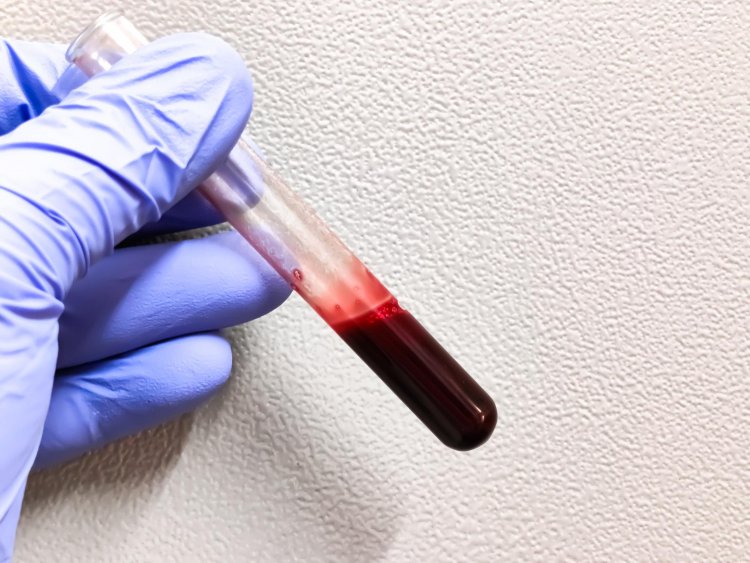Beyond the Blood: Navigating Life with Thrombocytopenia
Thrombocytopenia, characterized by a low platelet count in the blood, is a complex medical condition with various underlying causes and potential complications. This comprehensive guide aims to provide detailed insights into thrombocytopenia, including its symptoms, etiology, diagnostic approaches, treatment modalities, risk reduction strategies, related conditions, and practical tips for living with this condition.

Symptoms
Thrombocytopenia may manifest with a range of symptoms, including but not limited to:
- Easy bruising
- Excessive bleeding from minor cuts or injuries
- Petechiae (small, red or purple spots on the skin)
- Prolonged bleeding from cuts or gums
- Blood in urine or stool
- Heavy menstrual periods
- Frequent nosebleeds
Causes
Thrombocytopenia can arise from various mechanisms, broadly classified into:
-
Decreased Platelet Production: Conditions such as leukemia, chemotherapy, aplastic anemia, and certain medications can impair bone marrow function, leading to reduced platelet production.
-
Increased Platelet Destruction: Autoimmune diseases (e.g., immune thrombocytopenia), infections (e.g., HIV, hepatitis), medications (e.g., heparin-induced thrombocytopenia), and certain cancers can trigger immune-mediated destruction of platelets.
-
Sequestration of Platelets: An enlarged spleen due to liver disease, hematologic disorders, or other underlying conditions can sequester platelets, reducing their circulating levels.
Diagnosis
Accurate diagnosis of thrombocytopenia involves:
-
Complete Blood Count (CBC): Primary screening test to quantify platelet counts.
-
Peripheral Blood Smear: Microscopic examination of blood to assess platelet morphology and count.
-
Bone Marrow Aspiration and Biopsy: In select cases, bone marrow analysis may be necessary to evaluate platelet production and identify underlying disorders.
Treatment
Management strategies for thrombocytopenia include:
-
Medications: Depending on the underlying cause and severity, corticosteroids, immunosuppressants, or platelet-stimulating agents may be prescribed.
-
Platelet Transfusions: Reserved for cases of severe bleeding or critically low platelet counts.
-
Splenectomy: Surgical removal of an enlarged spleen may be considered in certain instances to alleviate platelet sequestration.
-
Treatment of Underlying Conditions: Addressing primary diseases or triggers contributing to thrombocytopenia is essential for long-term management.
Reducing Your Risk
To mitigate the risk of complications associated with thrombocytopenia, individuals can:
-
Minimize Injury: Adopt precautions to prevent accidents and injuries that may lead to bleeding.
-
Regular Monitoring: Adhere to scheduled follow-up appointments for routine blood tests and platelet level assessments.
-
Medication Compliance: Strict adherence to prescribed medications and timely communication of any adverse effects to healthcare providers.
-
Healthy Lifestyle: Maintain a balanced diet, engage in regular exercise, and abstain from smoking and excessive alcohol consumption.
Related Conditions
Thrombocytopenia may be associated with or resemble other hematologic disorders, including:
-
Immune Thrombocytopenia (ITP)
-
Thrombotic Thrombocytopenic Purpura (TTP)
-
Hemolytic Uremic Syndrome (HUS)
Understanding the distinctions among these conditions is crucial for accurate diagnosis and tailored management.
Living with Thrombocytopenia
Living with thrombocytopenia necessitates:
-
Education: Empowering individuals with knowledge about their condition, its implications, and self-management strategies.
-
Communication: Establishing open channels of communication with healthcare providers to address concerns and optimize treatment plans.
-
Safety Measures: Implementing precautions to minimize the risk of injury and bleeding events in daily activities.
-
Emotional Support: Seeking support from healthcare professionals, support groups, or mental health services to address emotional challenges associated with chronic illness.
In conclusion, Thrombocytopenia poses significant clinical challenges, but with appropriate management and lifestyle adjustments, individuals can effectively navigate the complexities of this condition and optimize their quality of life. By understanding the symptoms, causes, diagnosis, treatment options, risk reduction strategies, related conditions, and practical tips for living with thrombocytopenia, individuals and healthcare providers can collaborate to achieve favorable outcomes and ensure holistic care.
#Thrombocytopenia #Symptoms #Causes #Diagnosis #Treatment #RiskReduction #RelatedConditions #LivingWithThrombocytopenia #Healthcare #Management #QualityOfLife
Disclaimer:
The information provided in this article is for educational purposes only and should not be considered medical advice. If you have any health concerns or are experiencing symptoms, it is important to consult with a healthcare professional, such as a doctor or clinic, for proper diagnosis and treatment. Always seek the advice of your doctor or other qualified health provider with any questions you may have regarding a medical condition. Do not disregard professional medical advice or delay in seeking it because of something you have read in this article.
What's Your Reaction?





















